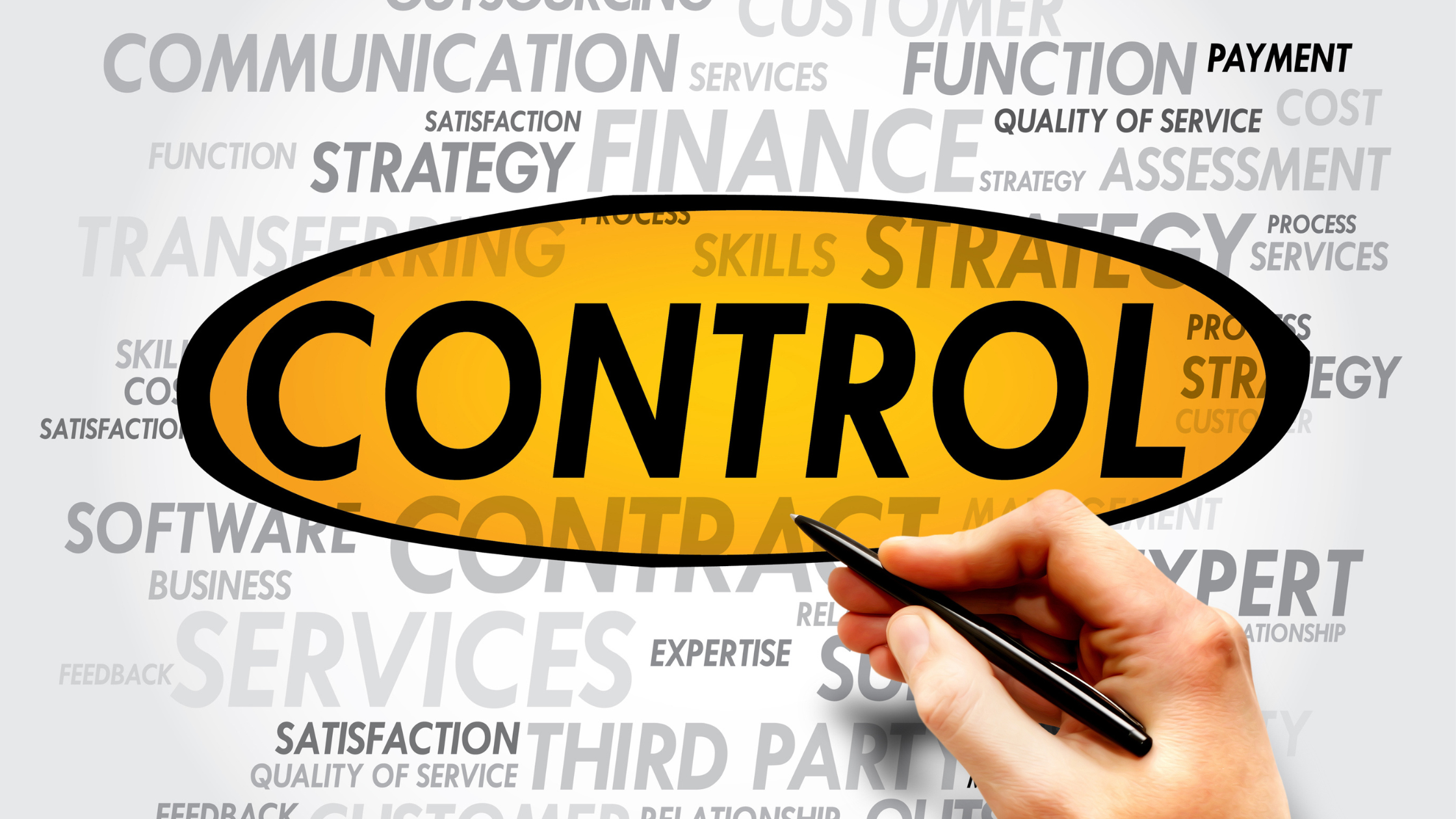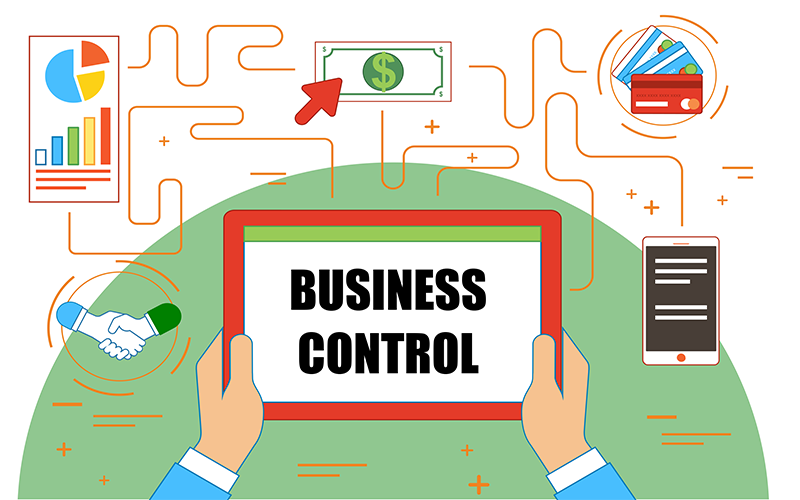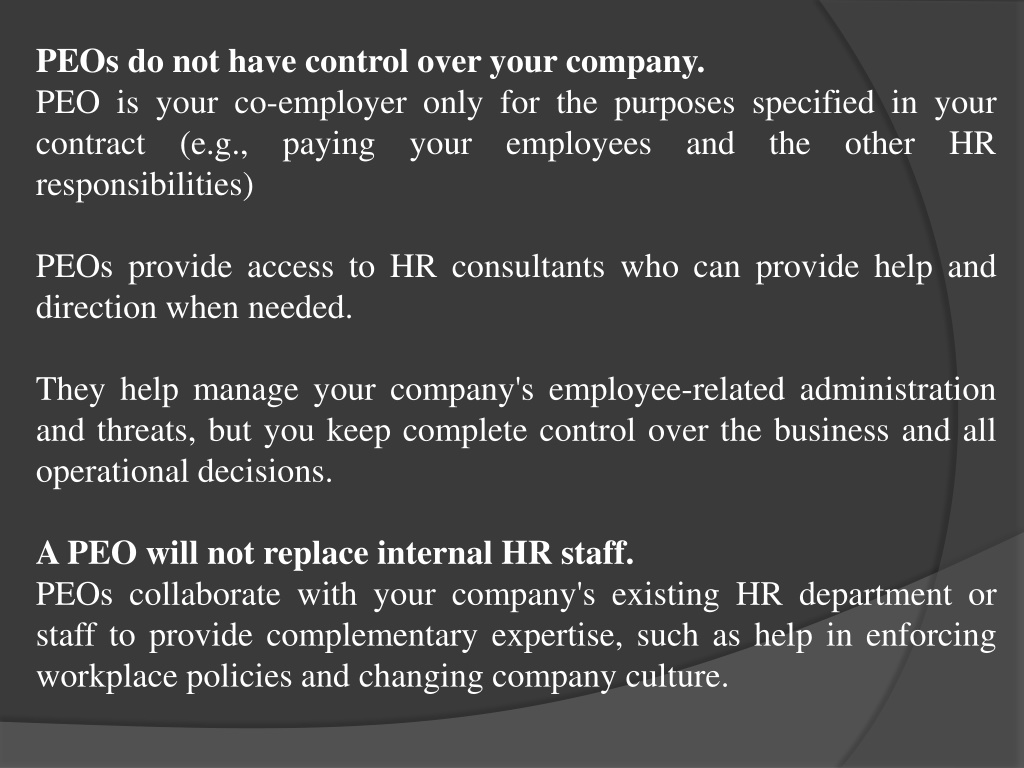Do Peos Take Control Of Your Business

The allure of streamlined HR, payroll, and compliance can be tempting for small to medium-sized businesses (SMBs). But beneath the surface of promised efficiency lies a critical question: Do Professional Employer Organizations (PEOs) effectively take control of your business?
This question, debated among business owners and legal experts alike, centers on the co-employment relationship inherent in PEO arrangements. While PEOs offer valuable services, understanding the division of control and potential risks is paramount for any business considering this partnership.
The Co-Employment Conundrum
At the heart of the debate is the concept of co-employment. A PEO doesn't just provide services; it enters into a co-employment agreement with the client company. This means that both the PEO and the client company share certain employer responsibilities.
The lines can become blurred, raising concerns about who ultimately controls key aspects of the business, particularly regarding employees.
Defining Control: A Matter of Contract
Control in a PEO arrangement is largely defined by the contract. These agreements typically outline which responsibilities the PEO assumes and which remain with the client.
PEOs usually handle HR administration, payroll, benefits, and compliance with labor laws. However, operational control, strategic decision-making, and day-to-day management of employees usually remain with the client company.
However, the practical application of these contractual divisions can be complex. Some argue that by assuming responsibility for HR and benefits, the PEO exerts significant influence over employee relations, potentially encroaching on the client's autonomy.
Potential Areas of Influence
While operational control typically stays with the client, PEOs can exert influence in several key areas. Compliance with employment laws, for example, is a significant area of PEO expertise.
This expertise can be beneficial, helping businesses navigate complex regulations and avoid costly penalties. However, it also means that the PEO has a say in how the company handles employee-related legal matters.
Furthermore, PEOs often have standardized HR policies and procedures. While intended to ensure compliance and best practices, these standardized approaches might not always align perfectly with the client company's culture or specific needs, potentially causing friction.
Weighing the Benefits Against the Risks
The decision to partner with a PEO involves weighing the benefits against potential risks. For many SMBs, the benefits are undeniable. Access to better benefits packages, reduced administrative burden, and improved compliance can be significant advantages.
According to the National Association of Professional Employer Organizations (NAPEO), businesses that use PEOs grow 7 to 9% faster, have 10 to 14% lower employee turnover, and are 50% less likely to go out of business.
However, the potential loss of control, even if limited, is a valid concern. Business owners must carefully evaluate their needs and priorities, and meticulously review the PEO contract to understand the division of responsibilities.
Perspectives from Business Owners
Experiences vary among business owners who utilize PEOs. Some praise the increased efficiency and reduced administrative burden, stating that they retain complete control over their business operations.
Others express concerns about the standardized HR practices and the feeling of relinquishing some autonomy. One business owner stated, "While the PEO handled the paperwork, I felt like I had less direct control over my employees' benefits and HR policies."
It's essential to speak with other business owners who have experience with PEOs to gain a balanced perspective. These conversations can provide valuable insights into the practical implications of co-employment.
Looking Ahead: Due Diligence is Key
The key to a successful PEO partnership lies in careful planning and thorough due diligence. Before signing a contract, business owners should:
1. Thoroughly research potential PEOs and compare their services and pricing.
2. Meticulously review the PEO contract, paying close attention to the division of responsibilities and liabilities.
3. Speak with other business owners who have used the PEO's services.
The future of PEO arrangements hinges on transparency and clear communication. PEOs that prioritize open communication and customized solutions are more likely to build successful partnerships with their clients.
Ultimately, whether a PEO takes control of your business depends on the specific contract and the level of engagement from both parties. By understanding the intricacies of co-employment and exercising due diligence, business owners can harness the benefits of PEOs while retaining control over their core operations.



![Do Peos Take Control Of Your Business How and When Should You Switch PEOs [2022]](https://www.scalepeo.com/hubfs/How to Save Your Company During a Recession in 2022 (4)-png.png)














